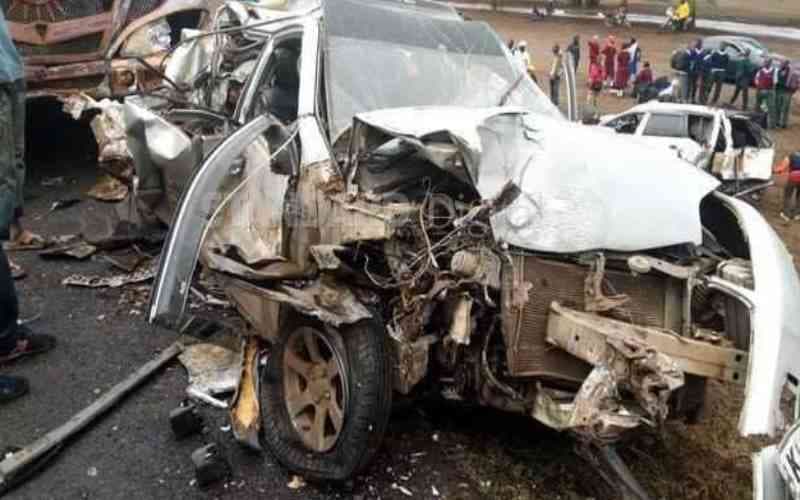We're loading the full news article for you. This includes the article content, images, author information, and related articles.
A pre-dawn crash in Gilgil claims six lives, spotlighting the persistent dangers of the Soy Sambu blackspot and intensifying pressure on authorities to address Kenya's road safety crisis.

GILGIL, KENYA – Six people were killed in a horrific head-on collision in the early hours of Saturday, October 25, 2025, at the Soy Sambu area near Gilgil, along the heavily trafficked Nairobi-Nakuru highway. The incident occurred at approximately 4:00 AM EAT when a saloon car, identified in various reports as a Toyota Wingroad or Caldina, collided with an oncoming truck. All six occupants of the smaller vehicle died at the scene.
Confirming the incident, Gilgil Sub-County Police Commander Winston Mwakio stated that preliminary investigations indicate the driver of the saloon car, which was heading towards Nakuru, was attempting to overtake another vehicle when it crashed into the truck. The impact of the collision was catastrophic, resulting in the instant death of everyone in the car. No serious injuries were reported among the occupants of the truck. Emergency services responded to the scene, and the bodies of the deceased were transported to the Gilgil Sub-County Hospital Mortuary for identification and post-mortem examination. The wreckage of both vehicles was towed to Gilgil Police Station, pending a full investigation.
The Soy Sambu stretch of the Nairobi-Nakuru highway has long been identified by authorities as a hazardous blackspot, notorious for frequent and fatal accidents. This latest tragedy is a grim reminder of the dangers plaguing one of Kenya's most critical economic corridors. Historical data reveals a pattern of deadly crashes in the Gilgil area, often involving head-on collisions attributed to reckless overtaking, speeding, and poor driver judgment. In 2021, nine people perished in the same area when a 14-seater matatu collided with a trailer. The highway's design, heavy commercial traffic, and driver behaviour have created a lethal combination that continues to claim lives with alarming regularity.
This crash brings the number of people killed on the region's highways between Friday evening and Saturday morning to ten, following four other fatalities in separate incidents, according to police reports. The incident underscores a persistent national crisis. According to the National Transport and Safety Authority (NTSA), road accidents remain a leading cause of death in Kenya. Data from the first quarter of 2025 showed 1,139 fatalities nationwide, a slight decrease from the same period in 2024, but the overall trend remains deeply concerning. A report from January 2025 noted that 4,748 people died in road crashes in 2024, an increase from the previous year, with Saturdays being the deadliest day of the week.
In the wake of the crash, road safety advocates and public officials have renewed calls for decisive action. Police have urged motorists to exercise extreme caution, adhere to traffic regulations, and avoid dangerous maneuvers, especially during the early morning hours when visibility can be poor. Commander Mwakio described the overtaking attempt as "recklessly dangerous" on a busy national highway.
The NTSA and other stakeholders have identified improper overtaking, speeding, and driving under the influence as primary contributors to the carnage on Kenyan roads. The economic cost of these accidents is staggering, with the NTSA estimating an annual loss of around Sh450 billion to the economy. While the government has initiated plans for the expansion and upgrade of the Nairobi-Nakuru-Mau Summit highway into a dual carriageway—a project expected to significantly reduce head-on collisions—progress has been slow, and the toll continues to mount. In the interim, enforcement of existing traffic laws and enhanced driver education remain critical. As the country approaches the festive season, a period typically associated with increased travel and a spike in accidents, authorities are under pressure to implement effective measures to prevent further loss of life on Kenya's roads.
Keep the conversation in one place—threads here stay linked to the story and in the forums.
Other hot threads
E-sports and Gaming Community in Kenya
Active 6 months ago
Popular Recreational Activities Across Counties
Active 6 months ago
The Role of Technology in Modern Agriculture (AgriTech)
Active 6 months ago
Investing in Youth Sports Development Programs
Active 6 months ago